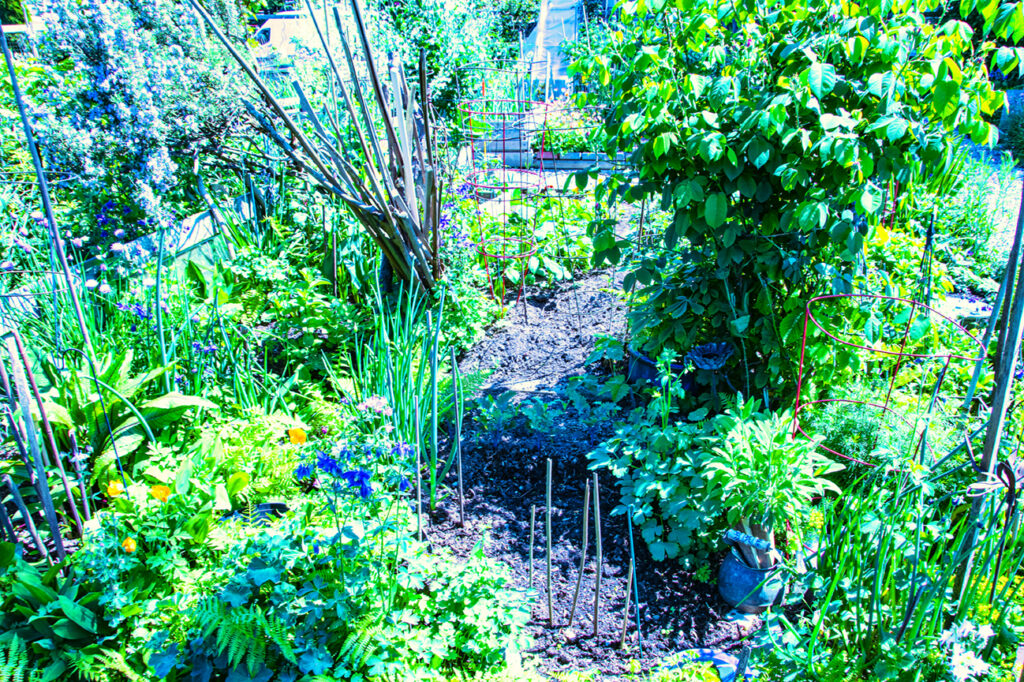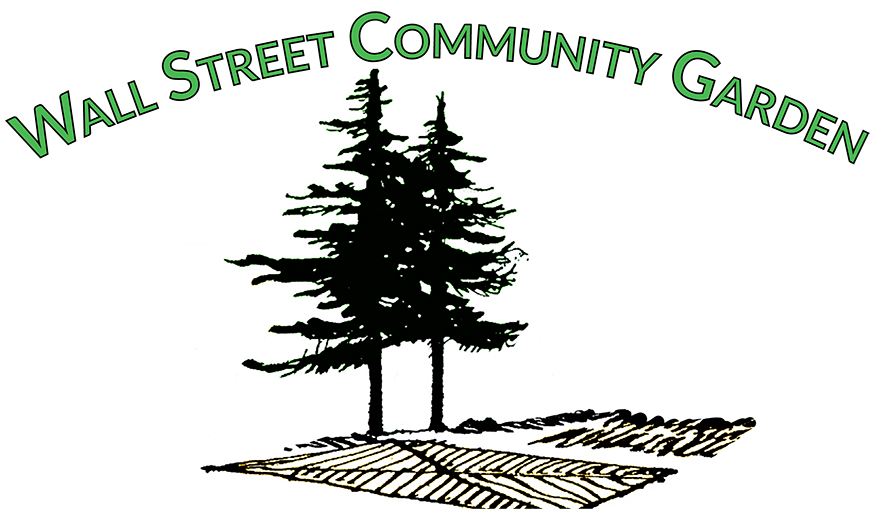Wall Street Community Garden
Guidelines
Reference Version
Member Information & Requirements
Quick Links
- Land Acknowledgement
- Vision Statement
- History
- Garden Board
- Finances
- Plot Allocation
- Member Participation
- Respectful Face-to-Face Interaction
- Conflict Resolution
- Plot Maintenance
- Environment
- Planting Reminders
- Irrigation
- Shed Maintenance
- Common Areas
- Composting Basics
- Guideline Amendments
- City of Vancouver Community Gardens Policy
- Vancouver Community Gardens Policy: Clause One
- Vancouver Community Gardens Policy: Clause Two
- Important Dates
- Contact and Communication
Land Acknowledgement
We acknowledge that our garden sits on the unceded ancestral territories of the Xwməθkwəy̓əm (Musqueam), Sḵwxw̱ ú7mesh (Squamish) and Səlilwətaɬ (Tsleil-Waututh) Nations, whose people have been planting and harvesting these lands since time immemorial.
We are humbled by these generations of stewardship. We support Land Back—the return of Indigenous ownership and sovereignty over territories stolen by colonial settlers. We also support full political and financial reparation and compensation for the catastrophic damages suffered by Indigenous peoples at the hands of settlers and their programs of genocidal violence.
Vision Statement
We are a community building a community. Our goals are to promote health and well-being by enhancing green space and in-person community connection. We will be an oasis for plants, animals, insects and people.
History
Forgotten Triangle residents launched our garden in 1999 with the encouragement of a community development worker and the assistance of the Wall Street Healthy Community Project. The Vancouver Park Board granted a lease of the land, located in Cambridge Park, and the city’s Engineering Department also gave permission, since part of our land is located on a City of Vancouver right-of-way.
Garden members and supporters worked cooperatively through the fall and spring of 1999-2000 to design the garden, build a fence, install an irrigation system and construct a shed. These efforts were supported by a major grant from VanCity Credit Union as well as smaller grants from other community agencies and fees from members.
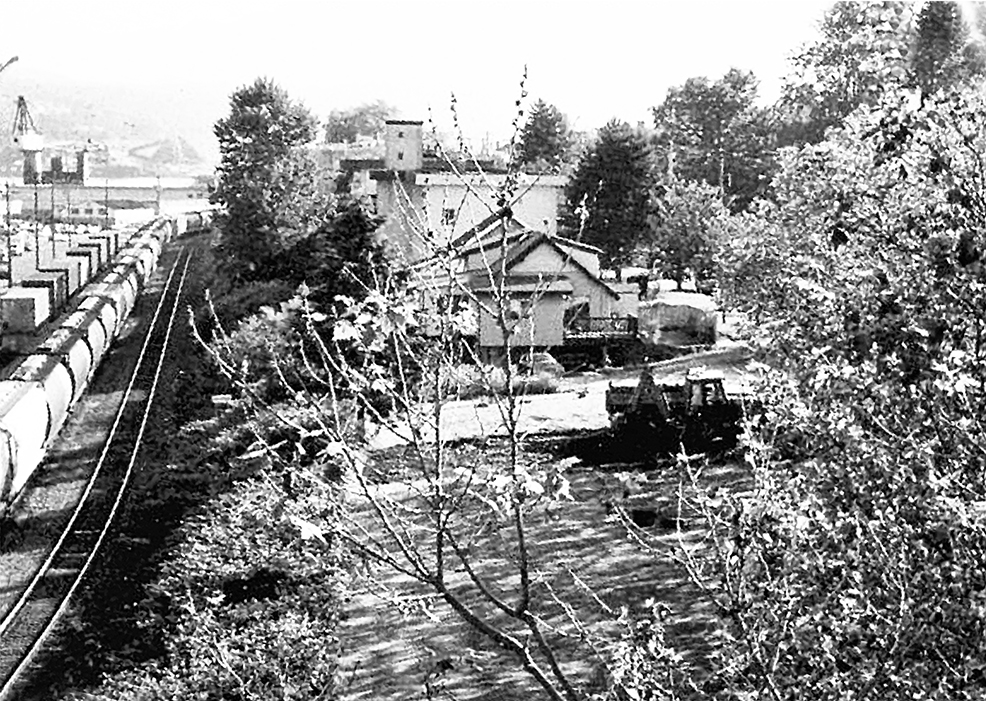
Early days at the garden site in Cambridge Park, winter 1999-2000.
Garden Board
Members of the Garden Board are elected at the Annual General Meeting, held in early spring of each year.
Elections are held for the following positions:
• Chair: Runs meetings, serves as the garden’s public spokesperson, assists in conflict resolution and, if required, assists Membership Coordinator in updating membership and wait lists.
• Treasurer: Collects fees, maintains bank accounts, keeps financial records and issues cheques for amounts not exceeding $150 or for expenditures approved at a general meeting or by the board. Along with the Membership Coordinator, arranges alternate payment of membership fees in special circumstances.
• Secretary: Keeps and distributes meeting minutes and other garden news to members and advises members of upcoming work parties and meetings. Maintains garden website.
• Membership Coordinator: Fills plot vacancies and maintains and shares with members up-to-date membership and wait list information. Receives communications from members unable to pay fees by April 1, turn soil by May 1 or plant gardens by May 25. Also receives communications from members unable to meet the requirement of three contributory work hours per season and from members unable to work their plots because of extenuating circumstances. Along with the Treasurer, the Membership Coordinator arranges alternate payment of membership fees in special circumstances.
• Members-at-Large: Non-portfolio board members who manage special or on-going projects. The number of Members-at-Large for each year is determined at the Annual General Meeting.
Finances
Annual membership fees of $100 are due by April 1 of each year. Fees may be paid in person at the Annual General Meeting, by electronic transfer or by leaving a cheque in a secure envelope, indicating the member’s name and plot number, in the mailbox on the side of the shed. In special circumstances, alternate payment can be arranged with the Treasurer or Membership Coordinator.
Gardeners who, in the previous season, have met the requirement of three contributory hours (see Membership Participation below) will be charged a reduced fee of $35. Gardeners who were not members in the previous season will also be charged $35.
Revenue is raised mainly from membership fees, supplemented by fundraising and donations from community organizations. Funds are used for the purchase of shared gardening equipment, city water fees, maintenance and other garden activities as determined by members and the board. Gardeners must have expenditures approved by a board member or, where the amount exceeds $150, at a general meeting of members or the board. Gardeners may also spend a one-time maximum of $50 to construct and maintain plot perimeter walls. Expenditures will be reimbursed upon presentation of receipts.
The following board members have cheque-signing authority: Chair, Treasurer and Membership Coordinator. Two signatures are required on all cheques.
Donations from individuals or groups are welcome, subject to approval by the board.
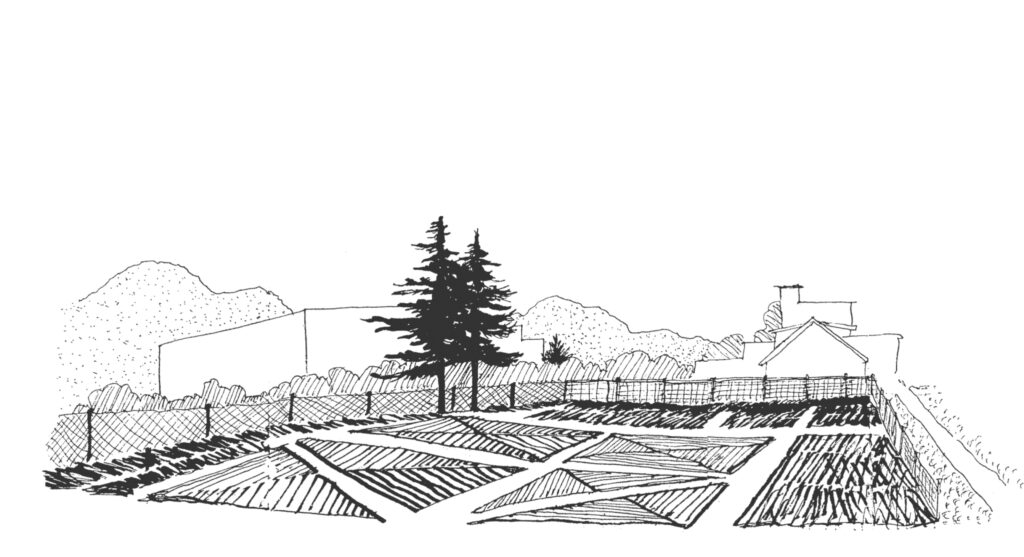
Drawing of Wall Street Community Garden, early 2000s, by founding member Dennis Yandle.
Plot Allocation
Plots are allocated on a seniority (first-come, first-serve) basis. Prospective members can join the garden’s wait list by contacting the Membership Coordinator via email. In periods when the number of prospective gardeners on the wait list becomes excessive, the board may temporarily stop taking new names.
When plots become vacant, they are allocated, according to seniority, first to existing members who have indicated an interest in changing plots and then to prospective members on the wait list.
One plot is allocated per household. Prospective gardeners with plots in other community gardens are ineligible for membership in Wall Street Community Garden.
Gardeners may not transfer their plots to others. Plots that become available when a member leaves will be allocated as outlined above.
Member Participation
Membership includes an expectation of participation in garden activities, which are an important aspect of our primary goal to build community. Members are required to contribute a minimum of three hours labour per gardening season. Contributory hours include, but are not limited to, the following activities:
1. Attendance at an Annual General Meeting is counted as one contributory hour.
2. Participation in work parties organized at general meetings or by the board—viewed as one of our most important community-building activities—is counted as one contributory hour for each hour worked. Please note that it is members’ responsibility to ensure their hours are recorded correctly by the work party organizer.
3. Participation in leadership activities, such as board membership or contributing significantly to garden goals, is counted as three contributory hours.
Gardeners unable to meet the requirement of three contributory hours per season because of illness, absence or other extenuating circumstances must contact the Membership Coordinator.
When a gardener has failed to meet the three-hour requirement and has not contacted the Membership Coordinator, they will be charged unreduced membership fees in the following year. See the Finances section above for details.
Respectful Face-to-Face Interaction
We treat each other with consideration and respect in meetings and in the garden. We run our meetings according to Robert’s Rules of Order.
Since community connection is a primary garden goal, meetings are held in person, with an electronic participation option for those who would like it.
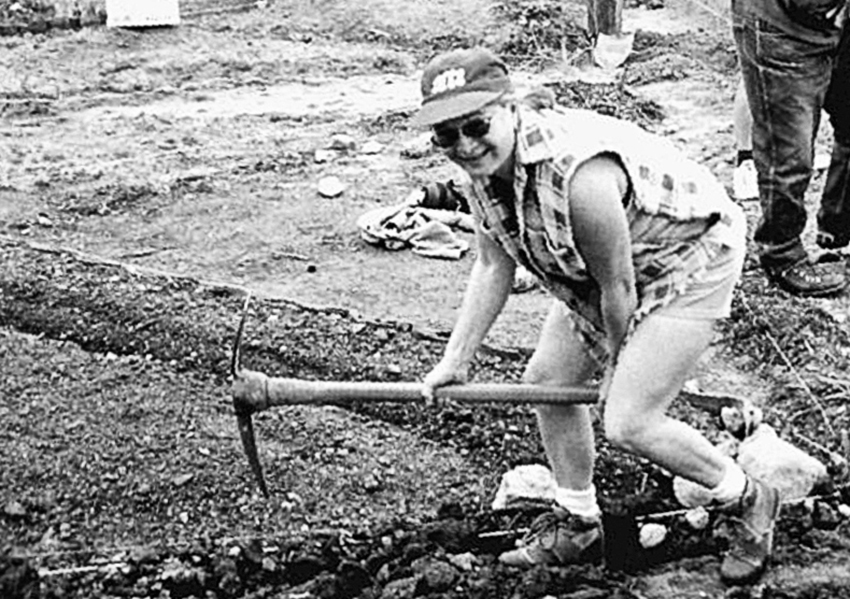
Garden co-founder Jan helping to build the Wall Street Community Garden, spring 2000.
Conflict Resolution
When a conflict arises, members are asked to communicate with each other to reach a solution. Should a conflict remain unresolved, the members involved can contact the Chair, who will act as mediator or designate a committee to recommend a resolution to a meeting of members or the board.
Plot Maintenance
Gardeners are expected to use their plots. When plots are neglected or abandoned, gardeners forfeit their membership.
Each gardening season, soil in plots is to be turned by May 1 and, as per City of Vancouver standards, gardens are to be planted by May 25 (with exceptions made for extreme weather).
Gardeners unable to meet these deadlines but still actively interested in working their plot may contact the Membership Coordinator. When deadlines are not met and a gardener has not contacted the Membership Coordinator, the plot will be reallocated.
During the season, a member who appears to have neglected or abandoned their plot will be contacted via email by the board. If the member does not correct deficiencies two weeks after being contacted, their plot will be deemed abandoned and their membership cancelled.
In determining if a garden has been neglected or abandoned, the board will be guided by the following signs. Also, members are advised that the presence of some, but not necessarily all, signs may still be viewed as evidence of neglect or abandonment.
- Absence of Activity: There is no sign of recent activity in the plot, including tools being used, soil being worked and watering schedules being followed.
- No community engagement: The plot holder is noticeably absent both from the garden and from attending to their plot.
- Lack of Seasonal Planting: The plot is mostly barren during the growing season, with little sign of new crops being planted.
- Overgrown Weeds: There is a significant presence of weeds that exceed a few inches in height.
- Watering Issues: There is a lack of regular watering and the presence of drought-stricken plants.
- Dead or Wilting Plants: There are many brown, wilting or dead plants that have not been removed.
- Soil Erosion or Poor Soil Condition: There is the presence of visible erosion or compacted soil that lacks proper aeration or nutrients.
- Pests or Diseases: There is an increase in pests or signs of disease that have not been addressed.
- Disrepair of Accessible Areas: Pathways around the plot are overgrown.
If a gardener is unable to work their plot because of illness, extended absence or other reasons, they must notify the Membership Coordinator in advance and arrange for assistance. If prior notice is not given or the gardener, in the next season, continues to be unable to work the plot, it will be reallocated. In special circumstances, a gardener may apply to the board for an extension.
According to City of Vancouver standards, plots must be tidied and prepared for winter, preferably with mulch, by November 1.
Environment
We are an organic garden. It is a requirement of our lease with the Vancouver Park Board that herbicides and pesticides are not allowed. We are also members of Naturescape BC, a provincial organization that promotes urban wildlife and healthy environmental practices.
Pets are not permitted in the garden unless they are leashed.
As per Vancouver Park Board regulations, the garden shall be maintained in a sanitary, safe and tidy condition, to the Park Board’s satisfaction.
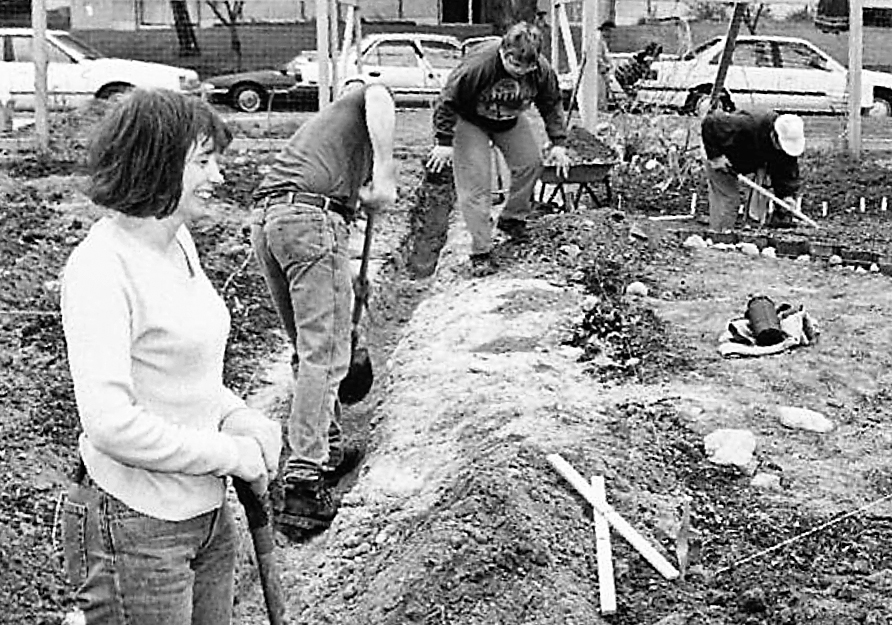
Constructing irrigation lines, spring 2000.
Planting Reminders
Invasive plants such as ornamental St. John’s Wort and most types of mint are not permitted unless contained within pots.
Gardeners are also asked not to shade their neighbours. Shady plants that could cause problems include corn, peas and sweet peas. To minimize shading, trellises and tall plants should be planted in a north/south align- ment.
For security reasons, members are asked to ensure that the garden remains visible from the street by not planting against the fence. Tall perennials are not permitted against the fence and gardeners will be asked to move them.
Gardeners are asked to prevent weeds from going to seed by weeding their plots when weeds are young and to maintain weed-free paths adjacent to their plots.
Irrigation
Since the garden is charged for water, gardeners are asked to conserve their use of it. Seedlings require frequent watering, but mature plants need less water except on hot sunny days.
The best times for watering are either the early morning or evening. If watering on a sunny day, gardeners should avoid getting water on leaves, since water can magnify the sun’s rays and burn plants.
Please do not water your neighbour’s plot without their permission because this could interfere with their watering routine.
If you will be away and would like someone to water in your absence, please place a sign in your plot requesting watering assistance or make arrangements with a fellow gardener. Watering-assistance signs are available in the shed.
Shed Maintenance
To avoid water damage to the shed floor, please ensure that hoses are cleaned, coiled and thoroughly drained before replacing them neatly.
If you are the last to leave the garden, please check that the water is turned off and the shed door is properly locked.
Since no one is assigned to empty it regularly, the shed mailbox is to be used only in early spring to leave fee payments if members have chosen that option (see Finances above).
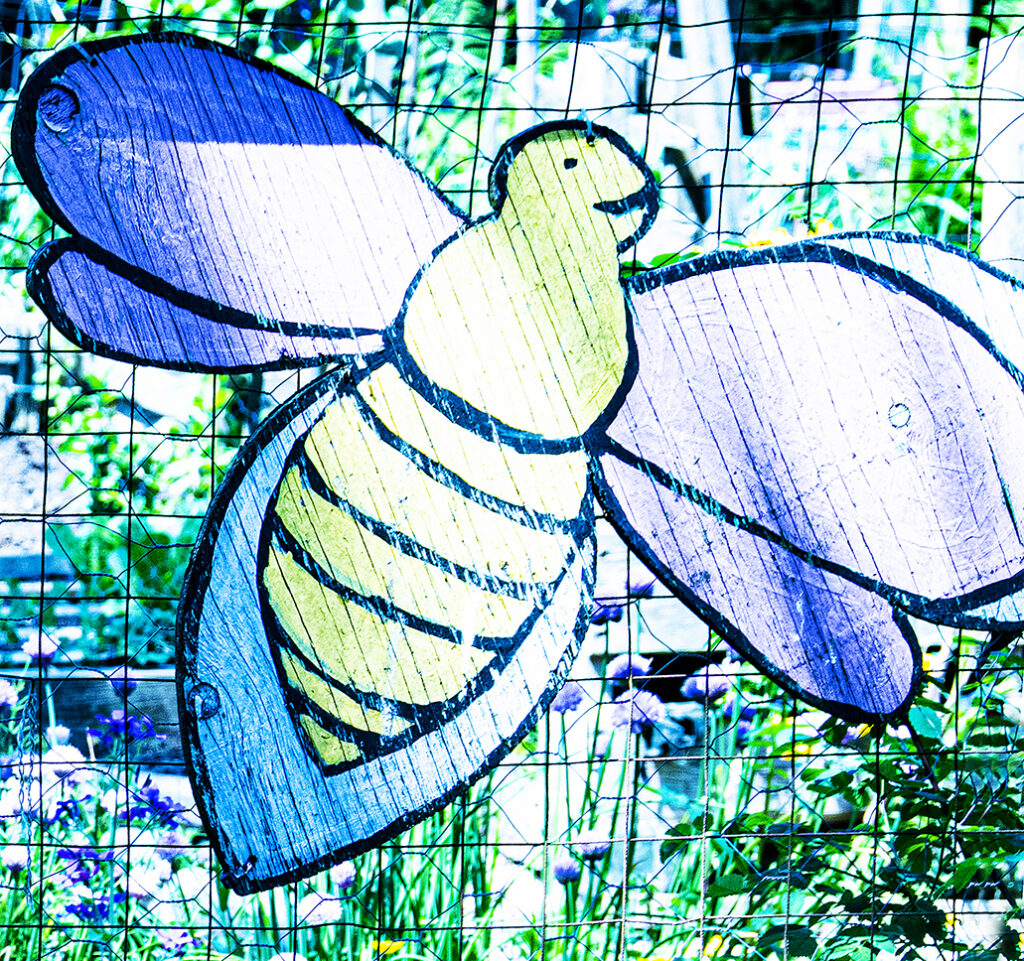
Detail, children’s art installation on the front garden fence.
Common Areas
Wall Street Community Garden has several common flower and herb beds: the Entry Garden (to the right as you enter the main gate off Wall Street), the beds bordering each side of the central pathway and three small herb beds at the southeast side of the garden.
The common beds are maintained by volunteers and are for the use of garden members. Once plants have been established, members are free to take cuttings but not to remove plants.
Composting Basics
Compost needs air, water, and exposure to soil microorganisms. It also needs elbow grease—to be turned frequently to avoid developing anaerobic pockets. Our garden uses a three-bin system, with one mature bin, one working and one to receive new material.
When using our compost bins, please keep the following principles in mind:
• Build piles in layers, using soil or mature compost between them.
• Before they seed, weeds from your garden plot can be added to the coarse compost bin—it’s great if you can cut them up first.
Vegetable trimmings from your harvest are also welcome, as are household organic items.
• Don’t add cooked materials such as meat or bone or anything attractive to pests. For example, if you have organic fruit items that have gone off, mix them with soil until you think even rats wouldn’t bother, then mix in more soil for good measure.
• Turn the pile at least every two weeks, watering when dry.
• The board will notify gardeners when garden compost is ready to be distributed at a work party.

Detail, Indigenous mural along the back fence of Wall Street Community Garden.
Guideline Amendments
These guidelines may be amended at an Annual General Meeting or, after notifying members in advance of proposed changes and soliciting feedback, at a board meeting.
City of Vancouver Community Gardens Policy
The Board recognizes community gardening as a valuable recreation activity that can contribute to community development, environmental awareness, positive social interaction and community education. The Board will collaborate with interested groups in assisting the development of community gardens.
For the purposes of this policy, a community garden is defined as a community environmental education program operated by a non-profit society. The program has the following features:
• A piece of land is utilized by the society to produce food and flowers for the personal use of society members.
• A community education program is in place which encourages the involvement of schools, youth groups and citizens who do not have an assigned plot in gardening activities.
Vancouver Community Gardens Policy: Clause One
The Board will support the development of community gardens in Vancouver through the following means:
• Providing access to information on the development and operation of community gardens.
• Assisting interested groups in searching for suitable land for the development of community gardens. This inventory must include City-owned land, land controlled by other government agencies and privately-owned land.
• Assisting in the development of user agreements with the owners of sites chosen.
• Assisting with the development of a community environmental education program.
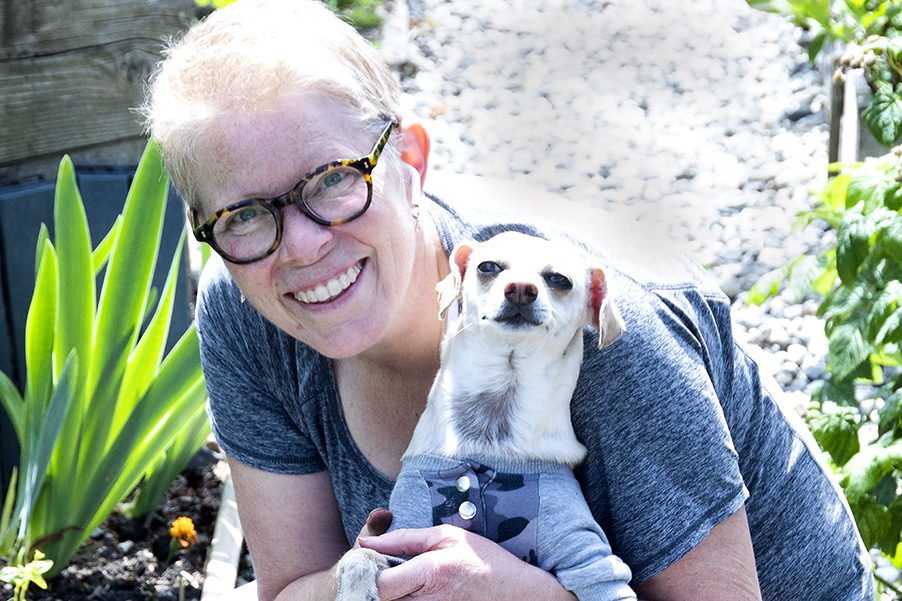
Wall Street Community Garden member Suzanne and her friend on a great June day, 2024.
Vancouver Community Gardens Policy: Clause Two
If it is determined that park land is the most suitable site for community gardens, the following conditions will apply:
• The garden is developed at no cost to the Board, except that prior to the first season, the Board will, at its cost, prepare the site for planting by removing grass, ploughing the soil and adding compost.
• A garden site plan must be drawn up and approved by the General Manager. The plan must include the layout of the plots and indicate any proposed structures or fences.
• A non-profit society agrees to develop and operate the gardens according to a user’s agreement which will specify the term of use, management responsibilities, user fees and access procedures including the following specific terms:
a) The term of the user agreement will not exceed five years.
b) Allotments of space must be made from a waiting list on a first come first served basis.
c) Membership in the Society, and the opportunity to be allotted a plot, must be open to any resident of Vancouver.
d) No pesticides are to be used.
e) Allotment fees charged by the society must be approved by the General Manager.
f) The Society must adhere to maintenance standards set by the Board.
g) No barriers to general public access to the site can be erected.
Although located on Parks with the prior approval of the Park Board, Community Gardens are operated by volunteers from the community.
Important Dates
• April 1: Membership dues must be paid or arrangements made with Membership Coordinator or Treasurer.
• May 1: Soil in your plot must be turned.
• May 25: Your garden must be planted (except in extreme weather).
• Nov. 1: Your plot must be tidied and prepared for winter.
Contact and Communication
Gardeners are expected to provide the Membership Coordinator with working personal email addresses or telephone numbers and to update their contact information if changed.
The board expects members to fully inform themselves of garden requirements as outlined above, including deadlines, member participation and plot maintenance. Members are also expected to keep themselves up- to-date on guideline changes and general garden business, which are communicated at meetings, by garden signage, email or, for those without email, by telephone.
For further information and to contact board members, please email wallstreetgarden@gmail.com.
For the latest information on garden news, events and updated guidelines, please refer to our website at https://wallstreetgarden.ca.
